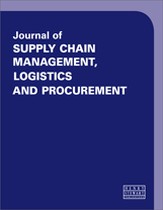How one supply chain integrator resolved one investor owned utility’s ageing workforce challenges using a scalable solution
Abstract
The US is experiencing a large shift in its labour force due to an ageing and retiring workforce. While this change is consistent across all industries, this case study will examine its effect on one utility company’s supply chain. An influx in industry spending coupled with a labour shortage led to higher utilisation of contract workforce to alleviate labour issues. However, this model brings about new challenges such as resource, material and space shortages as the utility’s support staff is required to support both their internal employees and outside contractors. This case study will describe how the utility partnered with a supply chain integrator to develop a well-planned, flexible and scalable solution that allows the utility supply chain to focus on their internal business units’ core competencies and stakeholders while limiting costs, improving efficiencies and increasing productivity. The utility benefitted from reduced total cost of ownership, supply chain optimisation and reduced risk.
The full article is available to subscribers to the journal.
Author's Biography
Dave Frank is Senior Vice President of Business Development for WTEC Energy’s Investor Owned Utilities division. Dave recently joined WTEC Energy with over 30 years’ experience in various generation, transmission and distribution operations positions. Dave studied supply chain and procurement discipline best practices with Dr Michael Hammer (MIT) and Dave Nelson (IBM, American Honda and John Deere) and combined those studies with his utility operations experience for practical utility-related applications. Within the last 15 years, Dave has led supply chain transformations within both supply operations and strategic sourcing. Most recently, he served as Chief Supply Officer (CSO) for two major North American investor-owned utilities, where he presided over a combined $6bn procurement spend as well as warehouse and logistics operations. He also led merger integration supply chain and sourcing activities for one of the nation’s largest mergers. He currently leads Integrated Supply Chain Services for WTEC Energy which includes working with clients to help them optimise their sourcing and supply chain operations. Dave holds a Master’s degree in Business Administration from Widener University. WTEC Energy is a leading global renewable energy supplier of wind and solar wire, cable, and structural steel components.
Citation
Frank, Dave (2018, September 1). How one supply chain integrator resolved one investor owned utility’s ageing workforce challenges using a scalable solution. In the Journal of Supply Chain Management, Logistics and Procurement, Volume 1, Issue 2. https://doi.org/10.69554/WDCL5829.Publications LLP
